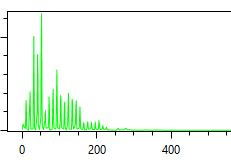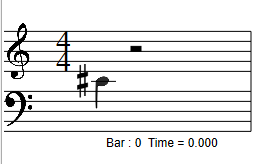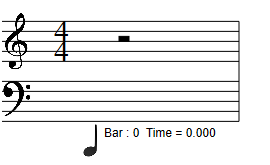Here I perform the same task, i.e. single note (A2), this time from a cello. This is a little more difficult as the cello is a polyphonic instrument with very strong harmonics.

From the signal and FFT result we can see that the first overtone has more energy than the fundamental frequency.

This problem is attenuated in the Multi-rate FFT spectrogram as the overtone is sampled over less time in the shorter sampled higher frequency FFT.
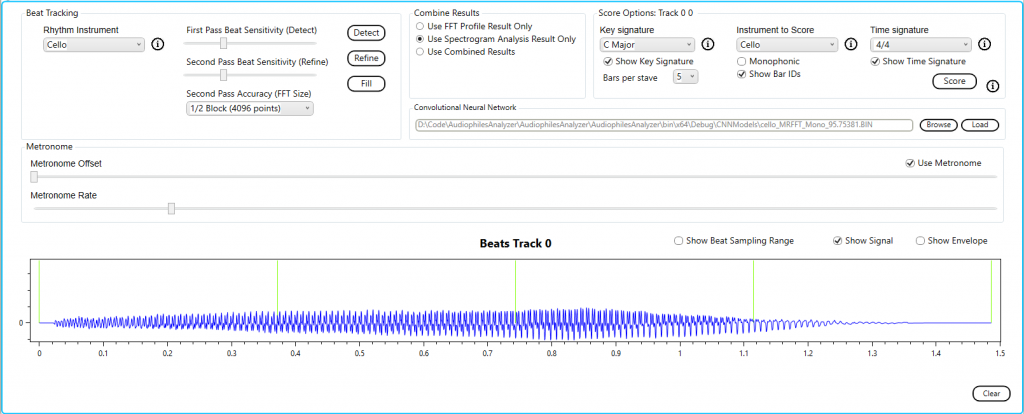
We use the built in profile for the cello.

Here we can see that as the note fades on the last beat the overtone is also transcribed.
Since we know that this was a single note the monophonic check box should be checked.

Now the result is as expected.

Using the built in Convolutional Neural Network for the cello we see leading and trailing silence; only the red line from the spectrogram has been transcribed.
The threshold for silence is calculated differently for the algorithm and the CNN. The algorithm sets the threshold on the fly during transcription based on a running average of the energy in the audio. For the CNN the threshold for silence is implemented when the spectrogram slices are prepared for training; the CNN was never trained on the parts of the note which were too quiet.
The simplest music file to transcribe is a single note. Here I use a bassoon playing a single note A (octave 2) to walk through the simplest transcription.

From the signal and FFT result we can see that this is indeed a single note with a single dominant frequency.

The spectrogram confirms the simplicity of this example.
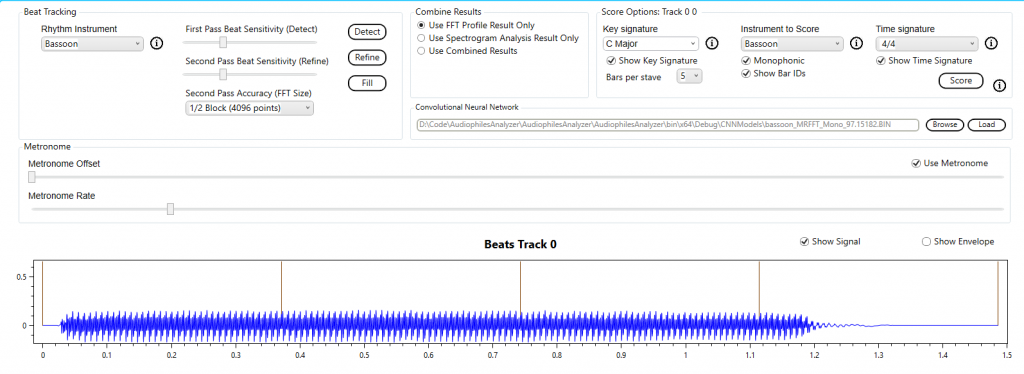
To transcribe this note we will use the built in bassoon profile and the default options (i.e. correlation).

The result is as expected.
Alternatively we could have elected to use the built in Convolutional Neural Network for the bassoon.

The result is a little different. The note ends just after the forth beat. The CNN transcribes this as a 3 beat note, not 4 beats.
Now that the Audiophile’s Analyzer is available in the Microsoft App Store I need to profile as many instruments a possible to increase the accuracy and utility of the application.
While the profiling tool is provided with the Audiophile’s Analyzer allowing the user to create their own profiles, it makes more sense for me to create them and incorporate then in future releases.
The tuba cannot be transcribed without a profile as the overtones dominate its spectrum.
The profile created from this and other samples:

Without applying the profile the highest point in the spectrum is selected we already know that the tuba is monophonic). This is C# which is incorrect.
Applying the profile using correlation we correctly identify the low A.
